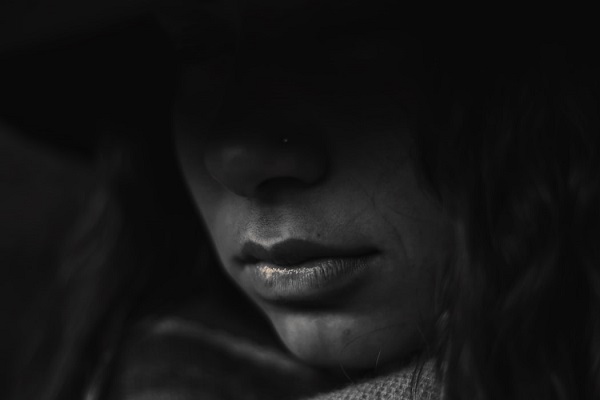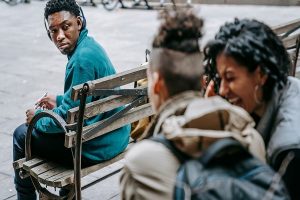She stares at her farm in grief, once again, more loss, another storm has ripped off six shed cloths from six greenhouses where she grows orchids and anthuriums. She is a small-scale farmer, a florist, and an entrepreneur, and has seen one too many hurricanes and storms, the most recent Hurricane Elsa, which hit Saint Lucia on Friday, July 2. “It is early in the 2021 hurricane season, and we were expecting a Tropical Storm”, said Beverly Charlemagne, “so all of my staff left early, and I did not take the usual precautions of taking down the plastics from the Greenhouses and securing them, because I did not anticipate this rapid intensification overnight.”
Notwithstanding, Beverly admits that she did not sleep on the night of July 1. Insomnia kicks in every time there is an impending storm. “I stayed awake all night”, she says with a sharp shallow breath. “It always happens. I stay to keep watch, because I get nervous about damage to my farm, my crops, my flowers, my green houses. I remember one year during a storm, an electrical pole located on my property, caught fire. Luckily, I was home to quickly turn off my main switch to avert any possible impact on my life and that of my family. Since then, I can’t sleep once there is a storm or hurricane advisory.”
The hurricane season comes yearly from June to November. According to a 2020 country profile for Saint Lucia on health and climate, “Saint Lucia faces a high risk of tropical cyclones and landslides and ranks 5th among small states for climate-induced events. Among 182 countries in the Climate Risk Index, Saint Lucia was in the top 10% of countries that suffered losses of climate-related natural hazards during 1997- 2016. Between 1980 and 2010, six major tropical cyclones along with three other climate-related natural hazards crossed or had effects on Saint Lucia’s Exclusive Economic Zone (EEC). Four of the tropical cyclones occurred between 1999 and 2010.”
Tropical cyclones bring about heightened fear on Caribbean populations annually. Saint Lucia’s Director of Meteorological Services, Andre Joyeaux, tells us that on Friday July 2nd Hurricane Elsa developed rapidly from a Storm, much like Hurricane Tomas did in 2010. “We call it rapid intensification”, he says. “Fortunately, it was a category 1 hurricane when it struck the island, so the usual related panic and distress was minimized”. Hurricane Elsa packed winds of 75 mph, and lasted 8 hours arriving at 8:00 a.m. and departing at 4:00 p.m.
The more a storm lingers, the more it causes impacts, and impacts vary based on characteristics, where either velocity or rainfall amounts can bring dreadful anxieties on people. “The timespan of a hurricane is based on its forward moving speed and its size”, says Joyeaux. “If the winds are strong and the rain is intense, and the forward moving speed is slow, these make the chances of escape smaller, and create higher risks for panic, increased anxieties and even death among the affected population.”
This was the case when the onslaught of Hurricane Dorian ravaged The Bahamas in 2017, where over 70 people lost their lives. It was a slow-moving storm, and stress levels were exacerbated. Dr William Hamilton, Senior Health Officer in the Ministry of Health Bahamas and Climate Change and Health Fellow, recalls the overwhelming bout of emotions he witnessed firsthand.
Dr Hamilton and his wife had a close call navigating category 5 force wind gusts, flying pieces of plywood, shingles and debris in efforts to reach safer cover. He vividly relates his experience upon reaching the hospital, “the magnitude and extent of the trauma witnessed as a result of Hurricane Dorian was unbelievable. I had patients that experienced rapid heartbeats or extreme sweating. Some persons had difficulty in concentrating and making decisions. Others had alterations of their sleeping and eating patterns. Some went into states of depression and then we saw a lot of stress related physical symptoms such as headaches and nausea, chest pain. And those who had pre-existing conditions we have noted that this climate change event actually exacerbated some of those chronic conditions.”
With the current COVID-19 pandemic, anxieties are magnified, and promoting mental well-being and good coping techniques is of growing importance this hurricane season. In recognition of this necessity, PAHO and the CDB launched the ‘Stronger Together 2020’ campaign, aimed at “reducing the stigma about seeking mental health and psychosocial support and conveying the basic principles of Psychological First Aid (PFA). PFA is a way of helping people to feel calm and able to cope in a difficult situation. The campaign acknowledges that ‘in times of stress and crisis’, community support is essential. This initiative is one of several being undertaken by PAHO that is focused on enhancing the Caribbean’s health resilience to climate change.
In 2020, PAHO also launched the EU/CARIFORUM climate change and health project aimed at “improving the capacity of Caribbean countries to reduce the negative impacts of climate change on health, using the One Health Approach”. The Project recognizes the vulnerability of Caribbean people to extreme weather and its impacts on food and water security, health and wellbeing, reduced work capacity and impediments to countries’ abilities to attain the SDGs.
Even weatherman Joyeaux chuckles and confesses that “before I became a meteorologist, I too was fearful of hurricanes. At age 12, I experienced hurricane Allen and my father’s house blew away,” he recounts, “after this, for many years – storms, thunder, winds, or any rainfall event – small or large, would bring me anxiety”.
Now in his 50s, Joyeaux heartily admits that the same climate related anxieties jolted him to pursue his career in met services in 1998. “As a weatherman, I understand the science behind weather and climate. I know how hurricane cyclones, rain, clouds and the sun form. This knowledge has helped me overcome my climate fears”, he giggles.
But not everyone can conquer climate worries easily. For Beverly, the horticulturist, the financial costs associated with climate induced natural disasters is a relentless cycle of damage and loss to her livelihood. Farming is her life. When rainfall events, storms or hurricanes damage her crops, flowers, and investments, it also affects her psyche. Think about it – although there was no widespread devastation to the island of Saint Lucia during Hurricane Elsa earlier this month, Beverly estimates that damage to her farm, is valued at approximately ECD 30,000.00. “I have 14 Green Houses”, she explains. “During the passage of hurricane Elsa, a tree fell on one, a branch fell on one and six others lost their covers. Now I find myself in the usual spin of disaster recovery. I already have 3 men at a daily rate of ECD 60.00 trying to re-cover the torn shed cloths and this is just the beginning”, she bemoans.
As Beverly picks up the pieces from the damage to her farms, investments and livelihoods, it reminds us that climate change is not going to disappear anytime soon, unless large, developed countries work to reduce emissions and stay within the 1.5° C target. If not, the burdens of climate change will continue to take its toll even on the young.
Twenty-two-year-old Stephanie Pascal is a HEY Ambassador for Dominica and an undergraduate at the University of the West Indies, Cave Hill Campus. She somberly recalls when her home was devastated by Category 5 Hurricane Maria in 2017, “it’s definitely very scary because when you see the amount of destruction and the amount of loss, you feel like there’s no way you can overcome this, there’s no way you will ever return to normal.”
When asked about her outlook for the future, an unrestrained Stephanie resounds, “It’s definitely a concern especially living in the Caribbean. We know we are susceptible to the storms but what we see with climate change is that we are getting hit much more frequently and more intensely. Recognizing the reality that we cannot necessarily stop climate change fully is like recognizing the reality that the beauty of my country, my home, may not exist in a few decades or in a few centuries to come and that is very sad.”



